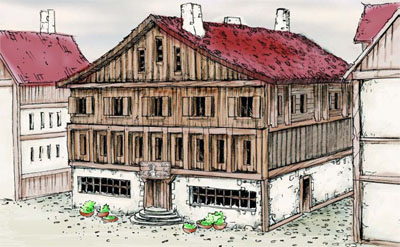Session 14A: Many Unhappy Returns
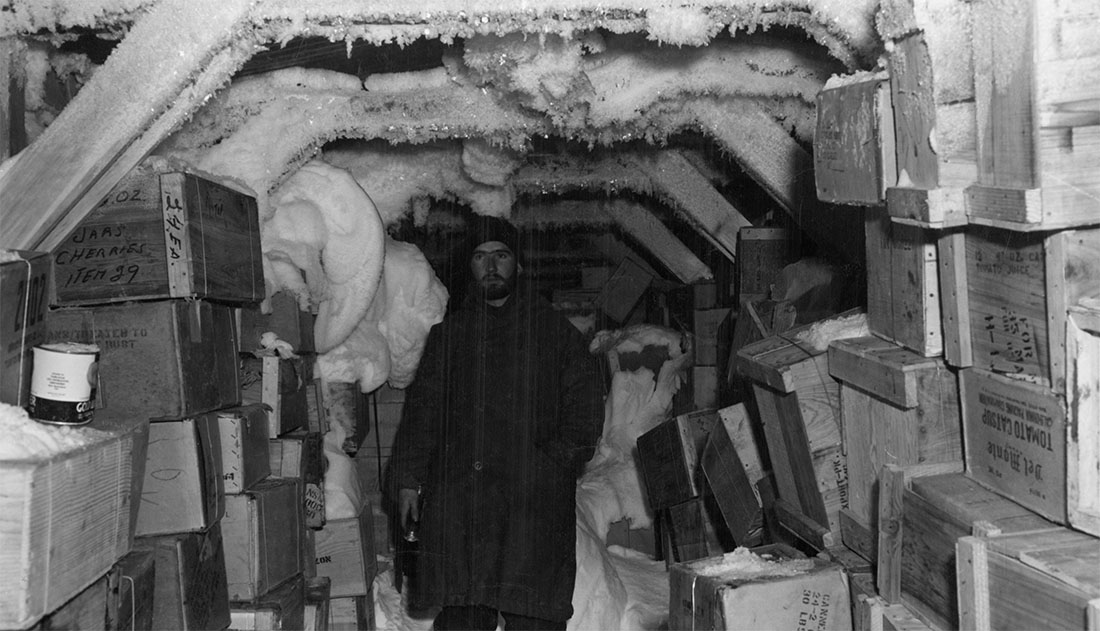
When Ranthir awoke, he quickly prepared the magical rites he would need to analyze and identify the equipment they had taken from Morbion. Much of this proved to be magical, but perhaps the most valuable were the finely-crafted boots he had worn. These had been enchanted with a levitation charm.
I think managing your gear is an important (possibly essential) part of Dungeons & Dragons. I don’t think it should be a painful or belabored process (and have even gone so far as to create house rules to streamline gear management), but both the balance of the game and its narrative dynamic are driven by PCs managing their equipment.
Some people may think that sounds like a strange idea, but the current session offers a couple good examples of what I’m talking about.
The first, which I already talked about briefly in “Treasure With Context”, is the orrery: A valuable treasure which is difficult to remove from the dungeon due to its bulk. If you were in a campaign that tended to just gloss over matters of encumbrance, it might be simple to simply handwave this away, too. “Once the complex is cleared, you’re able to figure out how to extract the orrery and sell it. Add X amount of gold to your bank account.”
But because there are structures and expectations in place, this campaign defaults to the players needing to figure out exactly how they’re going to solve this problem. The solution they came up with (selling the location of the artifact instead of the artifact itself) was incredibly clever, and thus both entertaining and rewarding in itself. But it also pushed the PCs to enter into an arrangement/alliance with a powerful noble family. That sort of thing has consequences.
Eventually, however, Tee was able to use the boots to reach the high cavern and confirm that there was, indeed, a cindershard outcropping there. Tee threw a rope and grappling hook down to her companions below, allowing Agnarr and Tor to climb up and join her in harvesting the crystals.
The second is the cindershard expedition: Notice that overcoming the challenges preventing them from harvesting the crystals couldn’t be easily overcome until they were properly equipped. Realizing that you aren’t currently carrying the right tools for the job will force a group to disengage and then, importantly, re-engage with the dungeon. Or it will force them to improvise around the lack. Either option will tend to create multi-faceted interest in the form of both challenge and drama as the groups deals with either the immediate jeopardies involved with improvising around missing equipment or dealing with the strategic complexities (and evolving narrative) that comes from leaving and then returning to the dungeon.
Dungeon expeditions are, above all, expeditions: It is a prolonged journey into a dangerous unknown where you are, for the duration of the expedition, cut off and unable to resupply from civilization. The decision to take resource X will unlock certain experiences, but comes at the expense of taking resource Y (which would have unlocked different experiences).
And if you look at Dungeons & Dragons from 1974-2008, the structures of the game are all ultimately focused on (and balanced around) the strategic elements of expeditionary play. While D&D is flexible enough that you can do many different things with it, the further your get from expeditionary play – the further you drift from Arneson’s and Gygax’s expected play – the more mechanical problems you’re going to find cropping up.
OTHER DYNAMICS
This is often mistaken for one-true-wayism. That’s not the case. Gear management is rewarding for D&D’s dynamic; it often isn’t rewarding for other play dynamics.
Blades in the Dark, 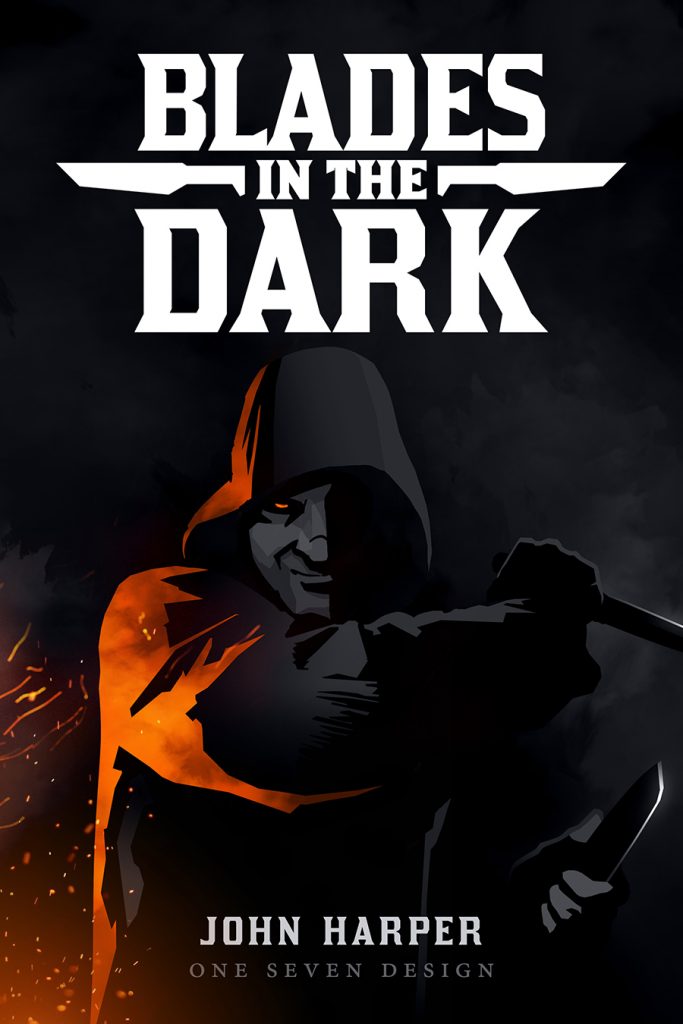 for example, focuses on criminal crews performing scores. Such scores are generally intended to be (and usually work when they are) one-shotted. You don’t want to disengage and then reengage with them; you want to run them.
for example, focuses on criminal crews performing scores. Such scores are generally intended to be (and usually work when they are) one-shotted. You don’t want to disengage and then reengage with them; you want to run them.
To create challenging and drama-filled runs, Blades’ game play is built around two pillars: First, improvisation and retroactive planning. Second, ticking clocks and resource ablation that pushes the PCs to the wall and makes them hurt. The game, therefore, uses an equipment system in which you select a specific Load before each score. The Load determines how many useful items of gear your character is carrying (3 for a Light Load, 5 for a Normal Load, etc.), but you don’t have to decide exactly what those items are until you use them. (Thus you can improvise freely by simply declaring that you planned for and brought exactly the right item for this circumstance, but are also faced with the possibility of running out of Load slots, leaving you unequipped for the next challenge.)
Another example is Trail of Cthulhu, which has a Preparedness skill. As long as an investigator has access to their kit, they can make a Preparedness test to see whether or not they have a particular piece of equipment. This is desirable in Trail because the game’s focus is the investigation; periodically putting the investigation 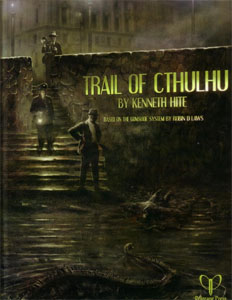 on hold in order to prepare an equipment list doesn’t enhance the core game play, it distracts from it. You want to move from getting a clue to seeing the payoff from the clue; you don’t want to pause between those two points for an equipment break.
on hold in order to prepare an equipment list doesn’t enhance the core game play, it distracts from it. You want to move from getting a clue to seeing the payoff from the clue; you don’t want to pause between those two points for an equipment break.
Why couldn’t you just takes Blades-style Loads or Trail-style Preparedness and graft them onto D&D?
Well, you could. But as I alluded to above, equipment management in D&D is only one of the ways in which the game is designed for an expeditionary dynamic: Wizard spell slots, long-term hit point ablation. The game was built on mounting expeditions into the dungeons below Castle Blackmoor, and virtually all of the core game play that isn’t built around a combat simulator is built around those expeditions. Tearing out one chunk of that game play and replacing it with something else isn’t going to single-handedly change the nature of the game. You’re going to end up with a mechanical chimera. One that may, or may not, work out.
(But, if you don’t give careful thought to the actual effect you’re trying to achieve, is more likely not to.)


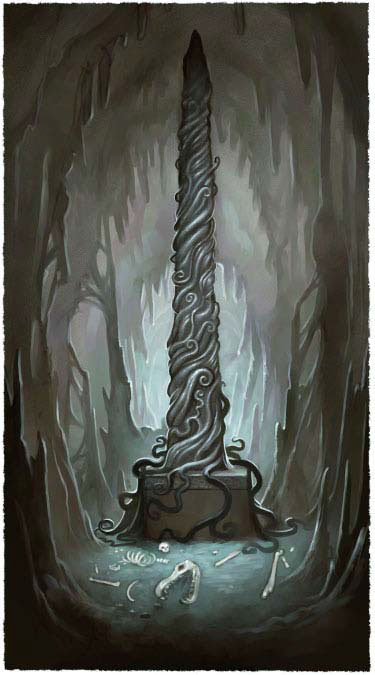
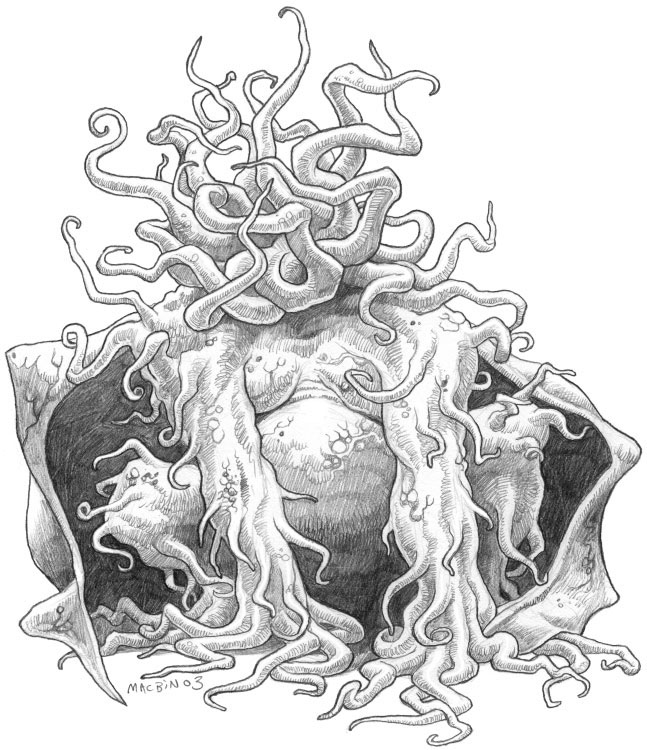 In the center of the third tier, at the top of the room, there was a slab of black ebony with the appearance of an altar.
In the center of the third tier, at the top of the room, there was a slab of black ebony with the appearance of an altar.




